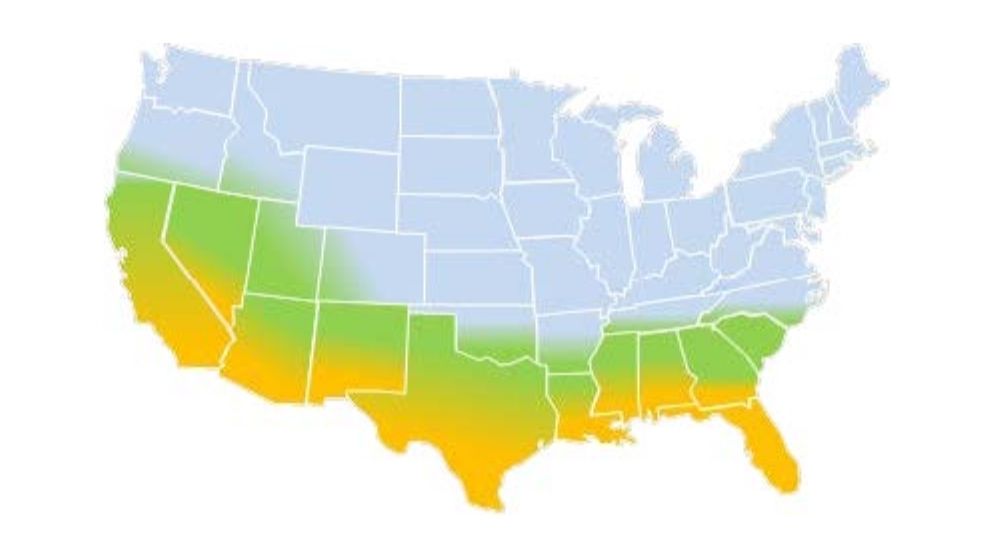It is important to understand several factors when determining if a cool roof is the best roofing solution for your needs. Generally, they can be compartmentalized into the three C’s: climate, codes, and clients.
Understanding the climate characteristics of your market is the first step. Cool roofs and the potential energy savings that appeal to facility managers may sound like an appropriate solution, but the long-term benefits of a cool roofing system installed in Philadelphia are going to be much different than one in Arizona, or as far north as Anchorage, Alaska.
Every roofing contractor learns early on that it’s critical to monitor the weather to effectively manage crews and workflow. Along with that, is understanding the climate zone, the building location, building use and the ratio of heating to cooling days. For example, a cool roof can help to lower energy demand during the cooling season, however it can also result a heating penalty during the winter months, depending on the climate zone. The proper amount of insulation can help to mitigate this performance gap. Consideration of each of these aspects are important when considering a cool roof and realizing the benefits desired.
The next step is really understanding the local and state building codes, and any corresponding regulations related to energy use. That includes existing codes as well as those currently in development and on the horizon. The different code standards that apply to traditional cool roofing systems were explained in greater detail in a previous blog in this series. That includes EnergyStar codes, which may be phased out without any real impact to the building trades due largely to other overriding and more progressive standards.
Engaging with municipal building officials and becoming familiar with specific regulations that could impact a project not only will help differentiate contractors seeking the job but can also set you apart as an expert in the field in your market.
Perhaps most importantly is truly understanding your client’s goals.
Do they know they need a cool roof and really know why? Is it because they seek the long-term energy benefits, or are they just lured in by the perception of green roofing and the potential energy-related tax credits? Is it in response to direct demands to improve the comfort of building occupants?
Those questions should be asked since building owners will have to weigh those factors when making decisions on a roofing solution. Particularly if they have concerns about the look or maintenance of a reflective roof, the need for insulation, and in situations when a cool roof won’t effectively meet desired results such as reducing the overall heat island effect or conclusively benefiting the local environment in other ways.
A building owner’s needs for any particular facility may vary from others in your job portfolio, but being educated on climate, codes and your client will place you in a good position for winning the job and providing a long-term solution that will build customer loyalty. See more about this blog series and the latest in roofing news and products at www.jm.com/roofing.

